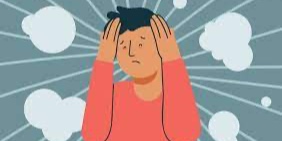
BODY PERCEPTION DISORDER
Body image disorder includes obsessive and repetitive or mental actions towards one or more perceived flaws in one's physical appearance. Here, the bodily defects perceived by the person are those that are not noticed from the outside or are poorly understood. Muscle perception disorder is also considered as body image disorder, where the person has the belief that his/her body structure is too small or insufficient in terms of muscle structure.
The criteria of body image disorder according to DSM-5 (American Psychiatric Association, 2013) are as follows:
A. Obsession with one or more perceived defects in physical appearance that are invisible or barely visible to others.
B. Repetitive behaviors (eg, constantly looking in the mirror, grooming, picking skin, seeking outside satisfaction) or mental acts (eg, comparing one's own appearance with others) at any point during the disorder, in response to concerns about one's appearance.
C. The obsession causes clinically significant discomfort or impairment in social, occupational, or functionally important areas.
D. Obsession with image is not better explained by concerns about body fat or weight, which are among the eating disorder criteria.
People with body perception disorder are obsessed with the defects they perceive in their physical appearance. People believe they look ugly, unattractive, abnormal, and disfigured, and these concerns range from looking "unattractive" or "wrong" to looking "shit" or "monstrous." Obsessions may focus on one or more body parts and are most often associated with skin (eg, perceived acne, scars, lines, wrinkles, pallor), hair (eg, "thinning" hair or "excessive" body or facial hair) or nose (eg, size or shape) may be the focus, while other parts of the body may be the focus of concern. People's obsessions are forced, involuntary, time-consuming (3-8 hours per day on average) and difficult to control.
HACKING DISORDER
Hoarding disorder, which is in the category of Obsessive Compulsive and Related Disorders in the DSM-5, is defined as experiencing severe difficulties in disposing or discarding any item. People with hoarding disorder have trouble getting rid of things. Excessive hoarding occurs regardless of the material value of the item. Symptoms vary from mild to severe in each individual. For this reason, the degree to which the disorder affects the functionality of the person in daily life also varies depending on the severity of these symptoms.
Diagnostic Criteria
- Constant difficulty in disposing of items regardless of actual value.
- Perception of the need to hide the item and difficulty in throwing it away.
- Restriction of active living space by accumulated items as a result of not discarding items.
- Impairment of the person's functionality in social, occupational, or other important areas of life.
- The behavior cannot be explained by another medical condition.
- The behavior cannot be explained by another mental disorder.
Symptoms
- Accumulating and keeping items that are not needed even though there is no room.
- Persistent difficulty in discarding items regardless of their true value.
- Getting upset at the thought of throwing things away.
- Feeling the need to hide things.
- The house and/or room becoming unusable due to the clutter of the accumulated items.
- Believing that things are unique.
- Thinking that everything will come in handy one day.
- Feeling safer in a room full of stuff.
- Attaching meanings and feelings to things.
- Indecisiveness, perfectionism, avoidance, procrastination, and problems with planning and organizing.
